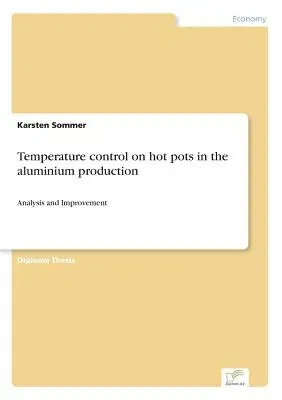Inhaltsangabe: Introduction: The process of aluminium production is,
even nearly 150 years after its discovery, not totally understood. Such
a large quantity of factors influences the production process that no
standard can be applied on it. In an aluminium reduction plant there are
no two identical electrolysis cells. Differences in the start-up and
operational disturbances alter the thermal and electrical behaviour of
each cell individually. So every cell has to be monitored individually
through the continuous changing bath composition and temperature
variation. Every cell needs an individual dynamic optimisation of the
chemical and thermal input, e.g. the AlF3- and CaF2-addition and the
regulation of the anode-cathode distance. Self-regulating mechanism are
the melting and freezing of the sidewall ledge, external mechanisms the
lifting and lowering of the anodes. In this work a cell control system
at Alumar (Brazil) was analysed and improved. The focus laid on
controlling the cell temperature through a variation of the
anode-cathode distance. The main objective was to analyse the effect and
influence of a so-called temperature resistance modifier on hot pots
(electrolysis cells). When the temperature of an electrolysis cell
exceeds a certain limit, the pot operates outside its optimal working
conditions, thus it has to be cooled down. This can happen by reducing
the anode-cathode distance and therefore the resistance of the pot. The
reduction is controlled by the so-called temperature resistance
modifier. The concept of the temperature modifier was introduced less
than one year ago at Alumar and is also within the Alcoa group a quite
unexplored field. This work is structured in two parts, first an
introduction to theory, then the practical part. Chapter 2 gives some
general information, from the history of aluminium to a brief overview
over the entire production process. Chapter 3 focuses on the general
functioning of the aluminium electrolysis. Chapter 4 de


